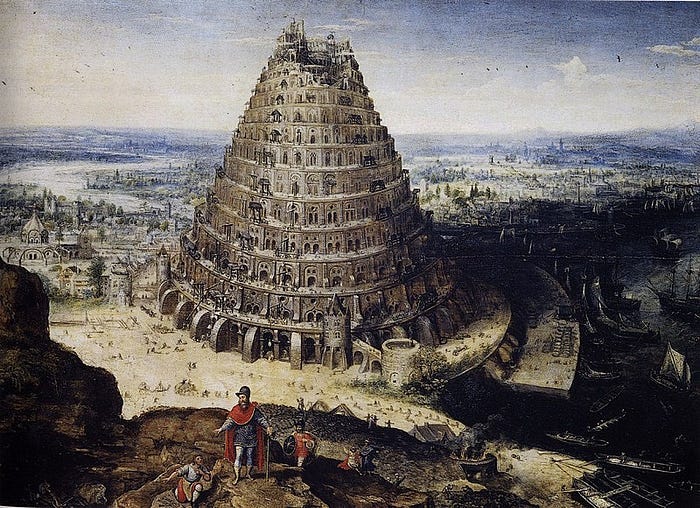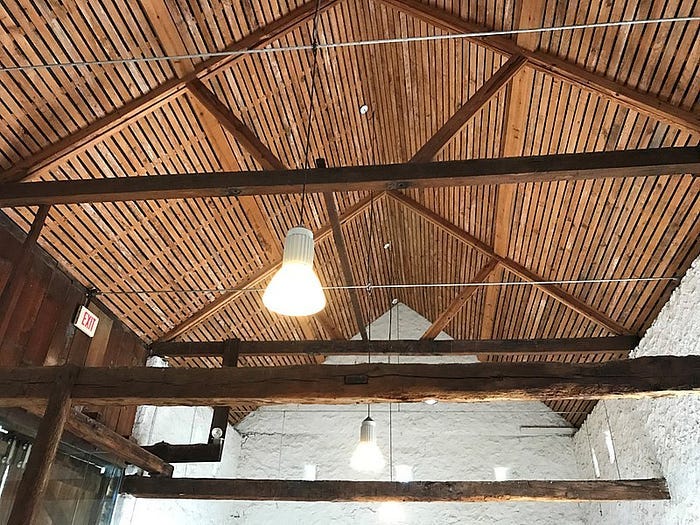Stone And Brick Teach A Powerful Lesson About Different Ways Of Thinking
A Philosopher, Professor, And Ancient Tale Show Us There’s More Than One Form Of Intelligence

How many times have you been told to work smarter, not harder? It makes sense intuitively. But what exactly is smart, and what makes up intelligence?
I’m sure you’re instinctively imagining stacks of books, or a university. Possibly a picture of Einstein. However, is that what intelligence is?
There’s a push in our modern world for education, which is a good thing. Right now about sixty-two percent of high school kids in the US go to college trying to build this intelligence. They look for it in classrooms.
Although an ancient story gives us another clue. A philosopher and a modern day autistic professor who revolutionized her industry lean the same way too.
As strange as it sounds, our first lesson in intelligence comes from bricks and stones.
It’s About The Material, Not The Tower
The Tower of Babel is one of those ancient tales which can have different meanings. The story tells us our ancestors once all spoke one language and attempted to build a massive tower climbing to the heavens.
God confuses mankind's language and ends the construction project, forever separating the group.
On its surface it’s one of those origin tales, explaining how one creature can speak so many languages. Others see it as a warning about pride. But Father Bernard J. Ezaki has another interesting interpretation.
The story explicitly states the builders used bricks instead of stone, which is an odd thing to focus on. It’s so trivial. But bricks are critical to the story. According to Fr. Ezaki:
“Bricks have four characteristics. First, they are unnatural and artificial. You won’t find a brick occurring in nature. Second, they are identical and uniform. It’s not easy to distinguish one brick from another. Third, they are functionally undifferentiated and interchangeable. A brick can serve equally well anywhere in a wall. Fourth, they are all but worthless. So what if you lose a brick. There are hundreds more just like it.”
The one people tried to turn themselves into bricks: unnatural sameness. But humans aren’t bricks; they’re stones.
Stones are individual. Each is forged by the world around it and the substance it’s made of. No one is a perfect substitute for another. All stones have their own value, beauty, shape, and purpose.
The interpretation of God within the story appears to punish the tower builders, but it’s more of an act of kindness. Picture a parent pushing a child away from danger. So, the push is worth it to protect their uniqueness.
Keep this idea in mind as we move on. Perhaps one of the most unique professors who ever lived has an idea about intelligence. Namely, there’s more than one form.
Intelligence Is More Stone, Less Brick
“I was born in the late 1940s just as the diagnosis of autism was being applied to kids like me. I had no language until age 4 and was first diagnosed as brain damaged. Today, many people would say that I’m neurodivergent.”
— Dr. Temple Grandin, New York Times
As a child Temple Grandin came to the strange realization everyone around her thought much differently than she did. Their thoughts came in words. But her brain worked in pictures — think Power Point slides.
Grandin struggled in school with higher forms of math because there was nothing to picture. But she excelled in physically creating things. In a recent podcast she explains she learns like AI programs.
The more Grandin sees, the more pictures are added to her brain, creating detailed files and expertise. Moreover, she learned to harness this ability to stellar results.
She’s authored multiple best-selling books
Was inducted into the National Women’s Hall of Fame in 2017
Time Magazine listed her as one of their “100 Most Influential People”
She revolutionized the cattle handling industry and was awarded a PhD in animal sciences
Grandin is currently a professor and mentions there’s a similar problem affecting the world like she experienced as a child. Society only sees two forms of intelligence, when there are three.
Verbal: excels in communication like lecturing, preaching, speaking, etc.
Visual Spatial: excels in higher mathematics, calculus, programing, and patterns
Object Visualizers: excels in building machinery, art, photography, construction, and repairing things
According to Grandin, our current society ignores object visualizers, looking down on the trades, mechanics, machine operators, and builders as having lower intelligence. She believes it’s just a different form.
Within our world all three are needed. Grandin explains nations need verbal thinkers to manage things, visual spatial thinkers to design it, and finally object visualizers to build the infrastructure to hold everything together.
When you ignore one, all suffer. Oddly, a philosopher in ancient Rome had a similar message.
Sweaters Can’t Blend Without Odd Threads
In Ryan Holiday and Stephen Hanselman’s book Lives of the Stoics, they devote a whole chapter to the Roman politician and philosopher Paconius Agrippinus.
He was one of the few that challenged emperors Nero and Domitian. In that age, most went with the flow. Better to keep your head down and not make waves, especially when you could be exiled or executed.
When someone asked Agrippinus why he risked standing out, he described humanity as a sweater. All fibers try to blend in together. But you can’t see the beauty of the fabrics mixing without red threads that stand out.
So even within something as uniform as a sweater, Agrippinus found a purpose for that rock-like uniqueness in the Babel tale. It’s Grandin’s neurodivergent thinking expressed in fabric.
And one random Saturday I witnessed the power of neurodivergent thinking in a personal construction project.
Stone-Like Thinking Builds Our Tower
As I pulled up to my friend’s house the magnitude of the project hit me. The whole roof was gone. He pulled it off and planned to add a second floor onto the rancher-style home.
My friend hired framers to add the skeleton of the new top floor, and I soon learned their brains didn’t function like mine.
I watched and helped the team put the structure together with minimal input, like they could just see things in their mind. However, the biggest shock came later.
A crane arrived to lift the trusses onto the building. This is a triangle-shaped heavy structure of wood, which forms the skeleton of the roof, but the crane arm couldn’t reach. My buddy panicked because he had a deadline and the roof had to be up that day.

The framers figured out an insane solution. We held two-by-four pieces of wood under a suspended truss, they nailed them to the structure, and removed it from the crane as we held everything up by muscle power.
The lead framer guided us as we balanced and walked this heavy triangle-like instrument of death into place. I was terrified. But it worked, and worked beautifully.
Talk about another form of thinking, my mind couldn’t have fathomed this solution in a million years. And this takes us back to the original question.
More Than One Form Of Intelligence
Today our view of intelligence is brick-like or uniform. Speakers and writers that wax poetically, along with scientific thinkers are considered geniuses. Someone who builds a house — not so much.
Not only do we see the world this way but funnel its people into the same chute. As Grandin notes, this leaves neurodivergent thinkers out. People aren’t bricks. As you try and create a society out of living pieces, you’re building with stones.
As Agrippinus mentions, the sweater of community needs its red threads to make the other fibers blend effectively.
Intelligence isn’t the stereotypical idea which pops into our brains, since some think in words, others patterns, and another group pictures.
Thousands of years ago our ancestors told a story of brick and stone, which still holds true to this day. Call it red threads, neurodivergent, or the Tower of Babel, but there’s more than one form of intelligence.


